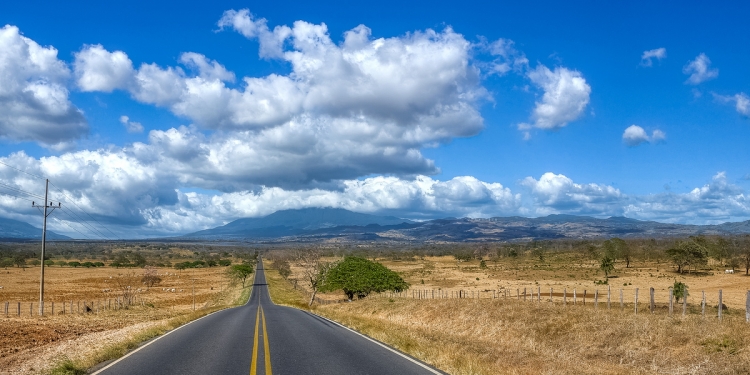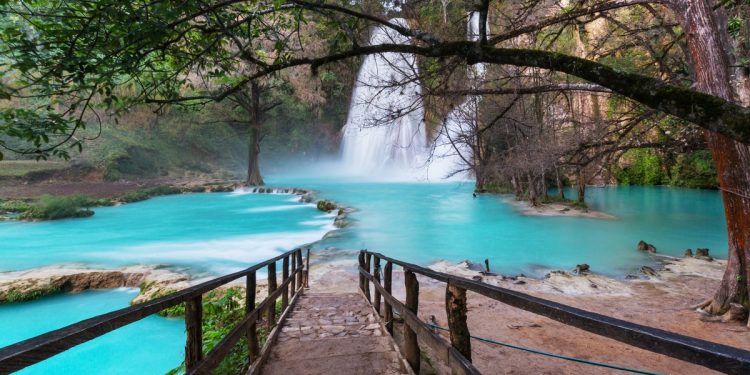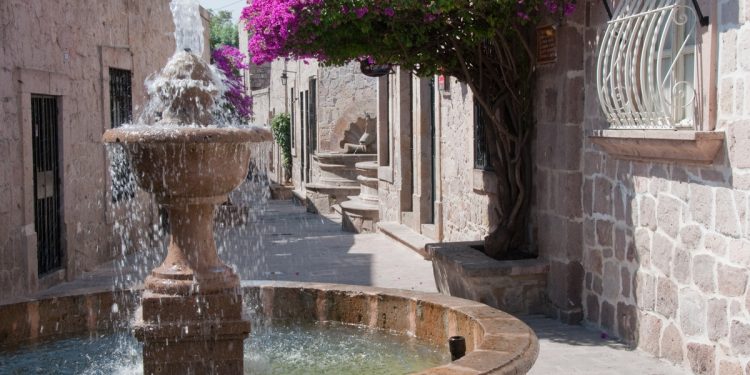As the autumn season arrives in Mexico, areas near the coasts are usually warm, but it’s worth noting that areas inland —many of which are situated at higher elevation— begin to get cooler and may also become quite cool or cold.
Autumn Equinox in Mexico 2024
The Autumn Equinox marks the end of summer and the first day of fall in Mexico. This year, the Autumn Equinox will happen in the early hours of the morning on September 22nd, 2024.
Coasts feel cooler, mountains feel colder
From late September, autumn temperatures in places situated at higher elevation (over 4,000 feet above sea level) will feel generally cooler, and temperatures can begin to feel chilly and even cold during early morning hours and after sundown at elevations above 6,000 feet.
As a rule of thumb, when you’re visiting Mexico’s inland cities situated at elevation during the autumn and winter, you’ll encounter comfortably warm days (typically up to 22C/72F) and cool or chilled morning and evenings; temperatures can drop to near-freezing in some places overnight during winter months, especially in rural locations.
Overcast days brought about by temporary climate depressions will usually bring cool or chilly weather all day long this time of year. Overnight temperatures at these higher elevations begin to warm-up again from late February or early March.
Coastal areas vs mountain towns
For example, the Pacific coastal towns of Ixtapa and Zihuatanejo are situated just a three-hour drive from the highland colonial city of Morelia. With Morelia situated at around 7,000 feet above sea-level —a mile-and-a-half up in the sky— autumn and winter there requires the use of pull-overs, fleece coats, and perhaps even some indoor heating for mornings and late evenings (locally, many people use log fires or small electric-powered space heaters to take the edge off colder hours).
By contrast, coastal areas like Ixtapa-Zihuatanejo and Puerto Vallarta —that swelter through the peak summer months— begin to yield their heat and humidity during the autumn, and temperatures become pleasantly warm; a principal reason why many ‘snow birds’ arrive at coastal towns across Mexico during this time of year with the intention of overwintering in Mexico.
Discover places to live in Mexico
You can discover locations across Mexico for living and retirement —as well as practical insights for choosing a location— on our section about Places to Live in Mexico.
Transition to the dry season
The rain season that begins in May or June comes to an abrupt end in October or November, and the transition from the rain season to the dry season begins. When the rains stop, there remains plenty of moisture in the ground to keep the flora bright and fragrant for a time; however, by late December the absence of torrential rains becomes noticeable, and by late January the effects of the dry season can be readily felt in the air, and seen across the landscape.
Clocks no longer altered in Mexico
In 2022, Mexico’s congress and senate voted to abandon seasonal clock changes, which set the country’s clocks forward by one hour in the spring, and back again by one hour in the fall.
Some municipalities along the border with the USA will continue to move their clocks to synchronize with corresponding border cities in the US.
As we have remarked elsewhere in these pages, the clock change was never popular in Mexico, and the country’s geographical location offers naturally-long daylight all year, regardless of any clock-time adjustments.
Dressing for cooler weather
If you’re in Mexico between October and March, it’s wise to pack some warmer attire when you’re situated at any of the country’s highland towns and cities, which includes most of Mexico’s colonial cities as well as the three big cities of Mexico City, Guadalajara, and Monterrey.
If you’re traveling to one of Mexico’s coastal locations during these months, it’s advisable to pack a light pull-over for any cooler evenings which may come to pass, usually caused by temporary climate depressions that blow in from the north.
Autumn and winter temperatures inland and by the coasts will vary depending on the precise location: check individual travel guides for detailed climate summaries by season and location.
Discover Mexico’s weather and climates
Mexperience helps you to discover Mexico’s diverse topography and climate as you make your lifestyle and leisure plans:
- Learn about how Mexico is a land of three lands
- Discover Mexico’s climate through the seasons
- The rain season begins in May/June and yields to the dry season in October/November
- Check individual travel guides here on Mexperience for climate by location. You can get full details about the weather by region and season on our guide to climate in Mexico.
- Browse the latest articles about climate and weather in Mexico
Mexico in your inbox
Our free newsletter about Mexico brings you a monthly round-up of recently published stories and opportunities, as well as gems from our archives.












Hola:
Mexperience has been for me one of the most cogent and comprehensive sources for information on the country in print. It is a terrific resource and I much appreciate its publication. Thank you.
Thank you, Joel for your kind words of appreciation!